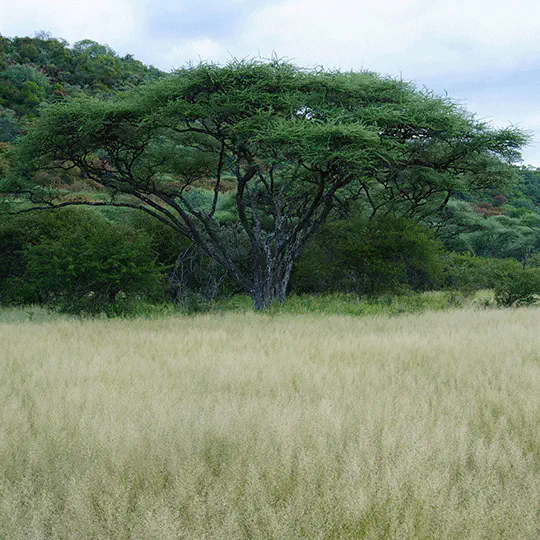Beyond the forest-savanna dichotomy
 L. Nill
L. Nill
Tropical forests and savannas are hotspots of biodiversity and harbour almost half of the human population. Understanding the characteristics, functioning, and distribution of tropical forests and savannas are thus not only of central interests to biogeography, but of importance to conservation and for safeguarding biospheric integrity in the Anthropocene. Yet there has been a strong bias in terms of scientific, policy and public attention to tropical rainforests relative to dry forests and savannas, originating in historical and cultural values towards certain ecosystems, research biases, and conceptual believes how ecosystems should look and function. Although we increasingly understand the ecological and evolutionary processes of this diversity, and with it the socio-ecological value of dry forests and savannas, fundamental biogeographic puzzles such as the actual distribution of savannas, and the controversy about potential forest and savanna bistability, remain weakly understood.
The aim of this project is to create a new perspective on the diverse suite of ecosystems found in the tropics by integrating concepts and methods from ecology and geography. We use global archives on plant occurrence and traits and combine these with remotely sensed ’spectral traits’ to disentangle key ecosystem types. The project will contribute to biogeography, macro-ecology, and conservation science by establishing new approaches dealing with structuring ecological complexity across the tropical geographies. If successful, this will help placing tropical grassy biomes on the map to move beyond the ‘forest-savanna dichotomy’ for questions dealing with biodiversity conservation, climate change, and human well-being.
PhD project
Leon Nill (PhD student) Tobias Kümmerle (Supervisor) Patrick Hostert (Supervisor)